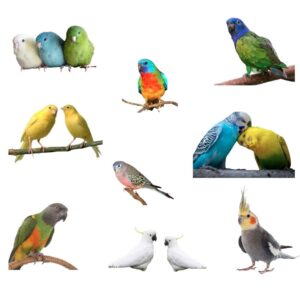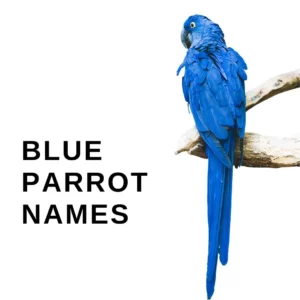Many bird species can mimic human speech, but some of the most proficient are parrots.
Parrots have a syrinx – a vocal organ at the base of their trachea that allows them to produce a wide range of sounds. The syrinx is made up of two membranes that vibrate to produce sound.
But are there any other species that can talk or mimic human language? And which are the most talkative birds out there?
Let’s talk this through.
Talking birds
11 Friendliest Pet Birds That Talk: Parrots
Some birds are more capable of talking and not just mimicking the sounds they hear. They are also friendly enough to be pets.
To help you find the right pet bird that talks, here are the 11 friendliest birds to consider:
African Grey Parrot
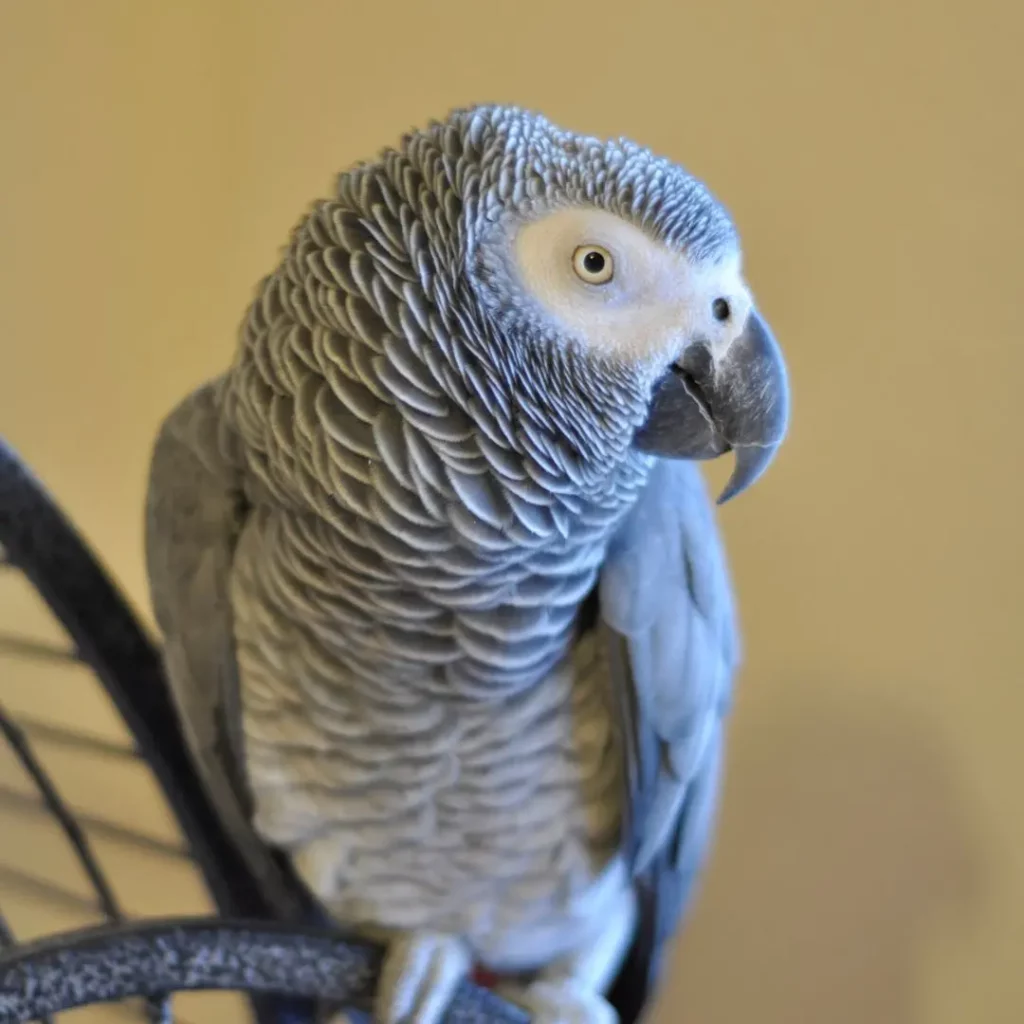
African Grey Parrots, originating from the rainforests of West and Central Africa, are renowned for their exceptional talking abilities.
African grey parrots can control the tension and vibration in their voice, allowing them to produce a wide range of sounds, including human speech.
More precisely, they can learn to talk by listening to human speech, trying to reproduce it, and even learning to use words in context. African grey parrots can mimic other environmental sounds, such as animal calls, doorbells, and even musical tunes.
African Greys can quickly develop an extensive vocabulary, showcasing a cognitive level akin to a 5-year-old child. Besides their impressive vocal abilities, African Grey parrots are brilliant, so they can also solve puzzles, learn tricks, and even understand some human behavior.
Due to their social nature, they thrive on interaction and mental stimulation, making them both fascinating and demanding companions.
To better understand how well this brilliant parrot can talk, check out this conversation between Gizmo (one of YouTube’s favorite African Grey parrots) and his owner:
Sun Conure
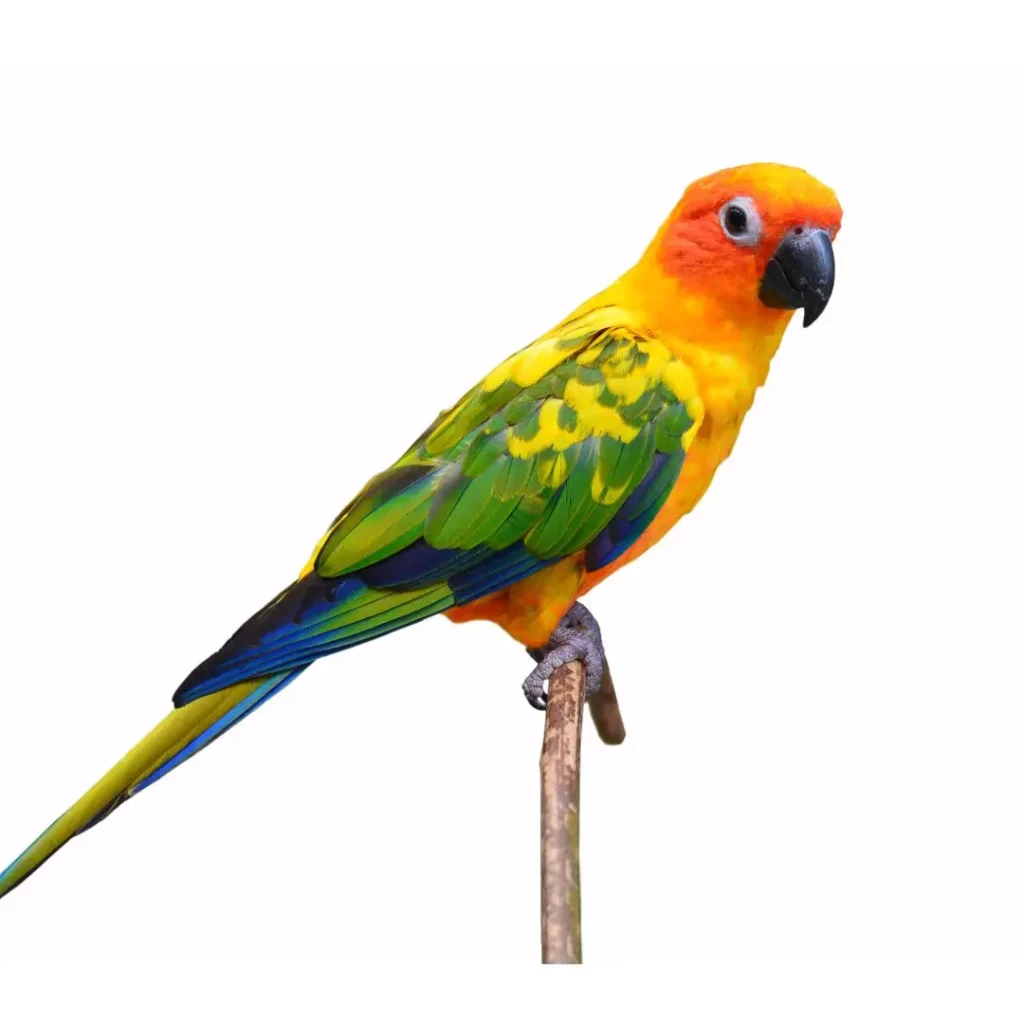
Hailing from the tropical regions of South America, Sun Conures are small to medium-sized parrots.
With patient training and consistent exposure to human voices, these clever birdies can quickly learn to say a few words and phrases, often mimicking the intonation and inflection of their human companions.
Their mimicry extends beyond words, encompassing a variety of sounds that pique their curiosity – doorbells, telephones, TV sounds, and even musical tunes. To unlock their talking potential, create an environment rich in linguistic stimulation.
Engage them in conversations, read aloud to them, and let them soak in the sounds of everyday life. With dedication and patience, you might have a small talk with your Sun Conure friend.
Although they may talk less extensively and clearly than some larger parrots, Sun Conures have a significantly more affectionate and playful demeanor – an excellent choice for those looking for an interactive companion.
Indian Ringneck Parakeets

Native to India and surrounding areas, Indian Ringneck Parakeets are medium-sized parrots known for their exceptional talking abilities.
These parakeets can mimic human speech with remarkable clarity, rivaling even some of the most talkative parrots like African Greys and Amazons. They can learn to say hundreds of words, phrases, and even short sentences, making them popular choices for those seeking a chatty companion.
The vocalizations of these cute parakeets are clear and distinct, making it easy to understand what they’re saying.
Budgerigars (Budgies)
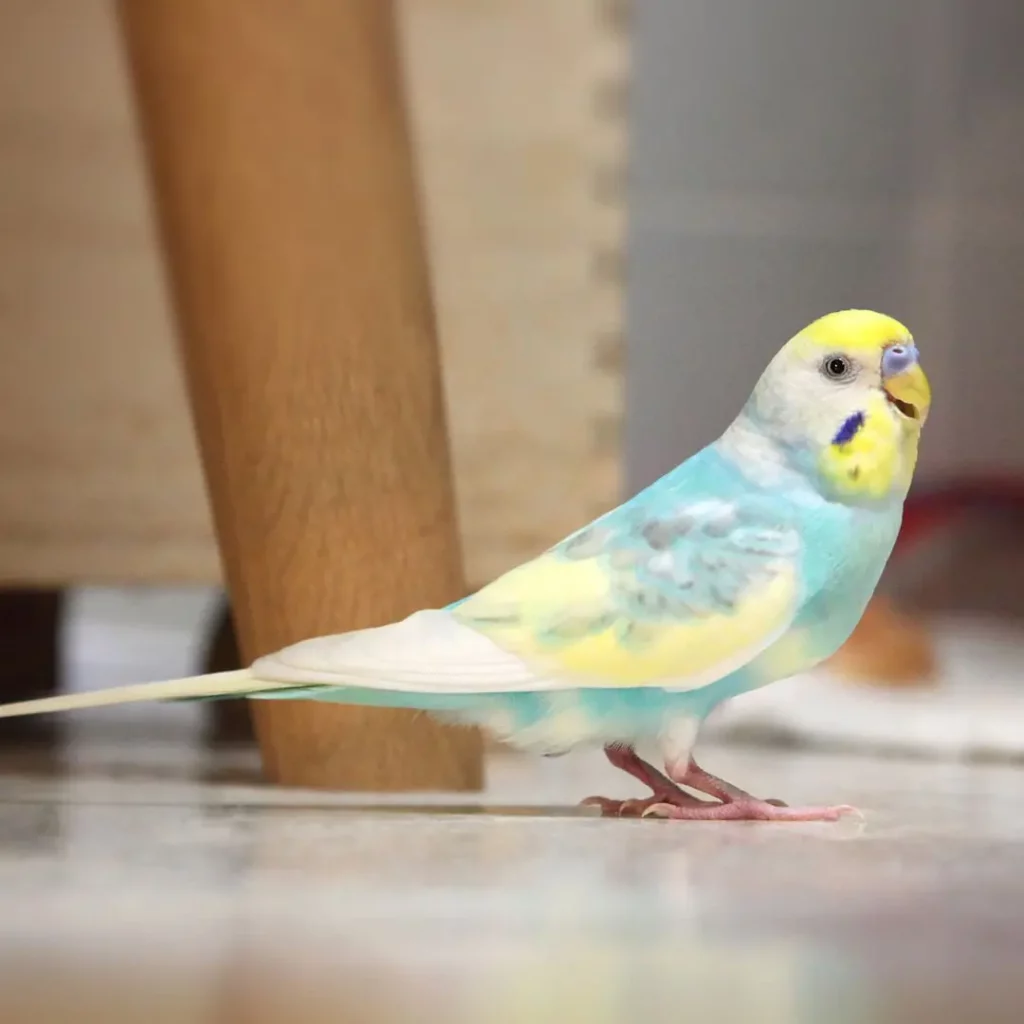
Originating from the arid grasslands and woodlands of Australia, Budgerigars, commonly known as Budgies, have become one of the most popular and talkative pet birds worldwide.
Budgies have an impressive ability to mimic human speech. While their vocabulary may not rival that of larger parrots like African Greys or Amazons, Budgies can learn to say hundreds of words and phrases and even form short sentences – with enough practice.
Their vibrant plumage, playful personalities, and remarkable talking ability have captivated bird enthusiasts for decades.
If you get a Budgie, providing plenty of toys for mental stimulation is important, as they can be quite playful. Also, regular, easy-going training sessions will contribute to a happy and talkative Budgie.
Quaker Parrot
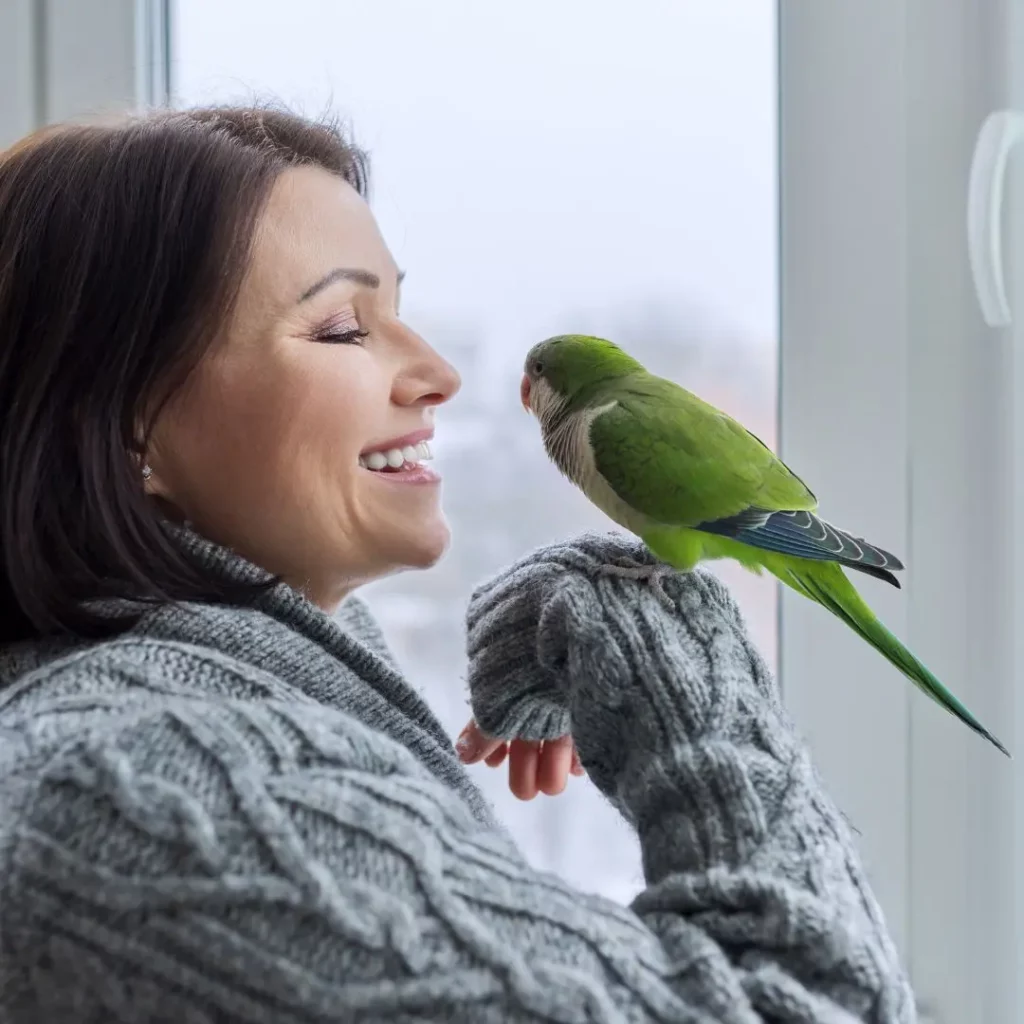
Quaker Parrots, often called Monk Parakeets, are native to South America. They’re one of the smaller parrots with incredibly engaging personalities.
They can mimic human speech with impressive clarity, learning to say hundreds of words, phrases, and even short sentences. Their ability to mimic sounds extends beyond human speech, as they can also learn to whistle, mimic other bird calls, and even reproduce household noises.
Experts believe that Quaker Parakeets have advanced talking abilities due to several factors:
- They’re intelligent: Quaker parrots are highly intelligent birds with a large cerebrum – the part of the brain responsible for cognition and vocalization.
- They’re social: Quaker parrots are social birds that not seek companionship and interaction, easily forming strong bonds with their owners. This helps them learn and use human language.
- They practice: A Quaker parrot is eager to learn and mimic sounds and will often try to talk or repeat sounds they’ve heard, even when no one is around.
Quakers thrive on social interaction, so spending quality time with them and providing a stimulating environment with toys, activities, and constant communication are key to their well-being.
Cockatiels

Native to Australia, Cockatiels are captivating birds that have distinctive feather crests on their heads and long tails. They’re well-known for their friendly demeanor, adaptability, and ability to mimic tunes and phrases – one of the best birds for beginners.
Cockatiels are renowned for their remarkable talking ability, often on the same level as some larger parrots like African Greys or Amazons. Due to their intelligence and social nature, Cockatiels can mimic human speech with impressive clarity, learning to say hundreds of words, phrases, and even short sentences.
Also, they get easily motivated by positive reinforcement. For instance, they’re more motivated to talk by the attention and threats they receive when they mimic human speech.
Macaws
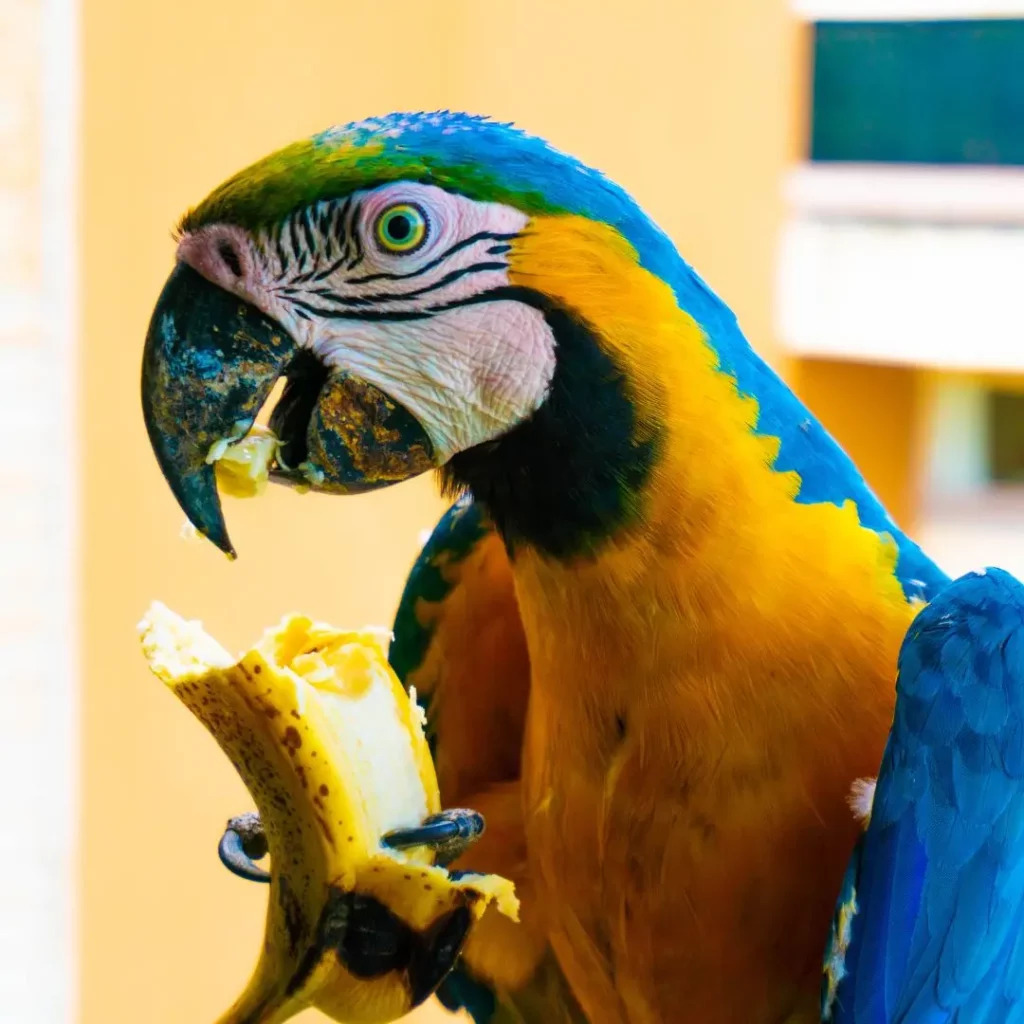
Hailing from Central and South America, these intelligent birds come in a wide spectrum of colors, including brilliant reds, blues, and yellows. Their size is impressive, ranging from 20 to 42 inches on average, depending on the species – for example, the Hyacinth Macaw, also known as a ‘’cobalt blue giant’’ is one of the largest birds in the world.
The talking ability of macaws varies among individuals. Some birds may pick up words and phrases quickly, while others may require more training and patience. But with consistent practice and exposure to human language, most macaws can develop impressive talking skills.
While their vocabulary skills might not match some other large birds’, Macaws make up for it with their clear and powerful voices.
They’re social birds that can easily form strong bonds with their owners, and their playful behavior can keep you entertained for hours.
Lovebird

Lovebirds, native to the African continent, are small parrots known for their affectionate behavior and vibrant plumage. Lovebirds can quickly learn words and simple phrases but can’t make sentences compared to some other pet birds that talk.
They can learn to mimic a few words or phrases, especially if they are hand-raised and exposed to human speech from a young age. A Lovebird’s ability to mimic sounds extends beyond speech, as they can also learn to imitate whistles, phone rings, and other common sounds in their environment.
A Lovebird has a super-friendly nature. They bond closely with their owners and often thrive in pairs. Besides a well-balanced diet, a spacious cage, and interactive toys, you also may want to get them in pairs to keep them constantly company and interact.
Eclectus Parrot

Eclectus Parrots, originating from the Solomon Islands, New Guinea, and Australia, are visually striking with their vibrant green, red, and blue plumage. Known for their clear and articulate speech, they’re one of the few parrot species where the talking ability is more pronounced in females.
Their gentle nature, ability to mimic words and phrases, and stunning appearance make them captivating pets.
Senegal Parrots
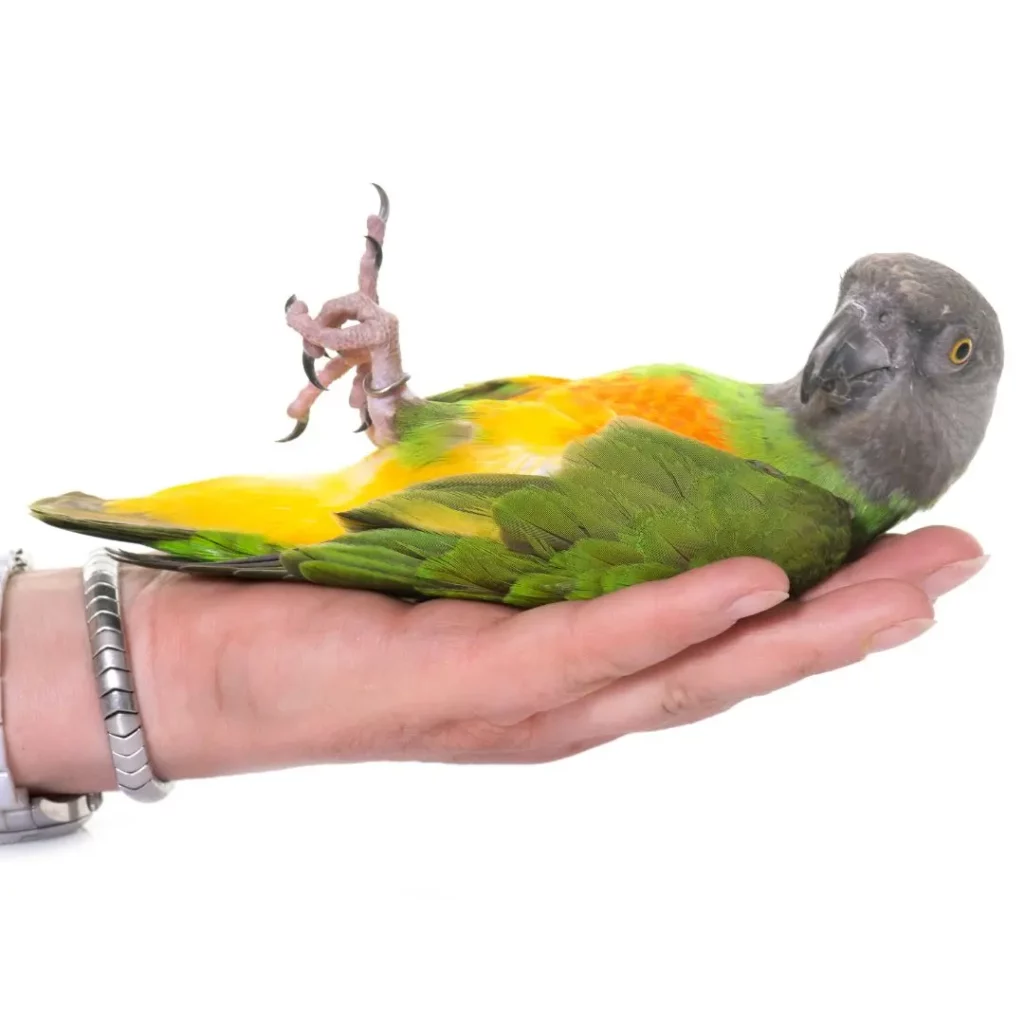
Senegal Parrots, originating from the woodlands and savannas of West Africa, are small parrots with outstanding talking/mimicking capabilities. They can accurately mimic human speech, often replicating words, phrases, and even entire sentences.
Their talent for mimicry stems from their highly developed cognitive abilities and the structure of their vocal structure.
Senegal parrots are well-known for being super friendly and gentle birdies. Their petite size and adaptability make them suitable for nearly all living spaces.
Amazon Parrots

Amazon parrots are renowned for their impressive talking abilities, making them popular choices as companion birds. These intelligent birds can mimic various sounds, including human speech, and even learn to associate words with their meanings.
Their talking abilities vary depending on the bird, but some Amazon parrots can learn to mimic dozens of words and phrases and even carry on simple conversations.
4 Talking Birds That You May Not Know About
Some birds that talk have a less developed talking capability than popular pet birds we domesticate. But some of these wild birds can mimic the sounds of other birds, noises, and even human voices.
However, while pet birds may use their vocal abilities to communicate with their owners and express emotions, wild birds use theirs for the following purposes:
- Mate attraction: Males use their mimicking abilities to attract females during courtship displays. Their elaborate songs, which can incorporate a variety of sounds, are designed to showcase their vocal prowess and impress potential mates.
- Territorial defense: Some experts speculate that birds that talk can also use their mimicking abilities to defend their territories – they can mimic the calls of other birds, including predators, to warn off intruders.
- Communication: They use their mimicking abilities to communicate with each other. They can mimic the calls of other lyrebirds to convey information about food sources, predators, and other threats.
Here are the five birds that have incredible intellect and mimicking talents:
Crows
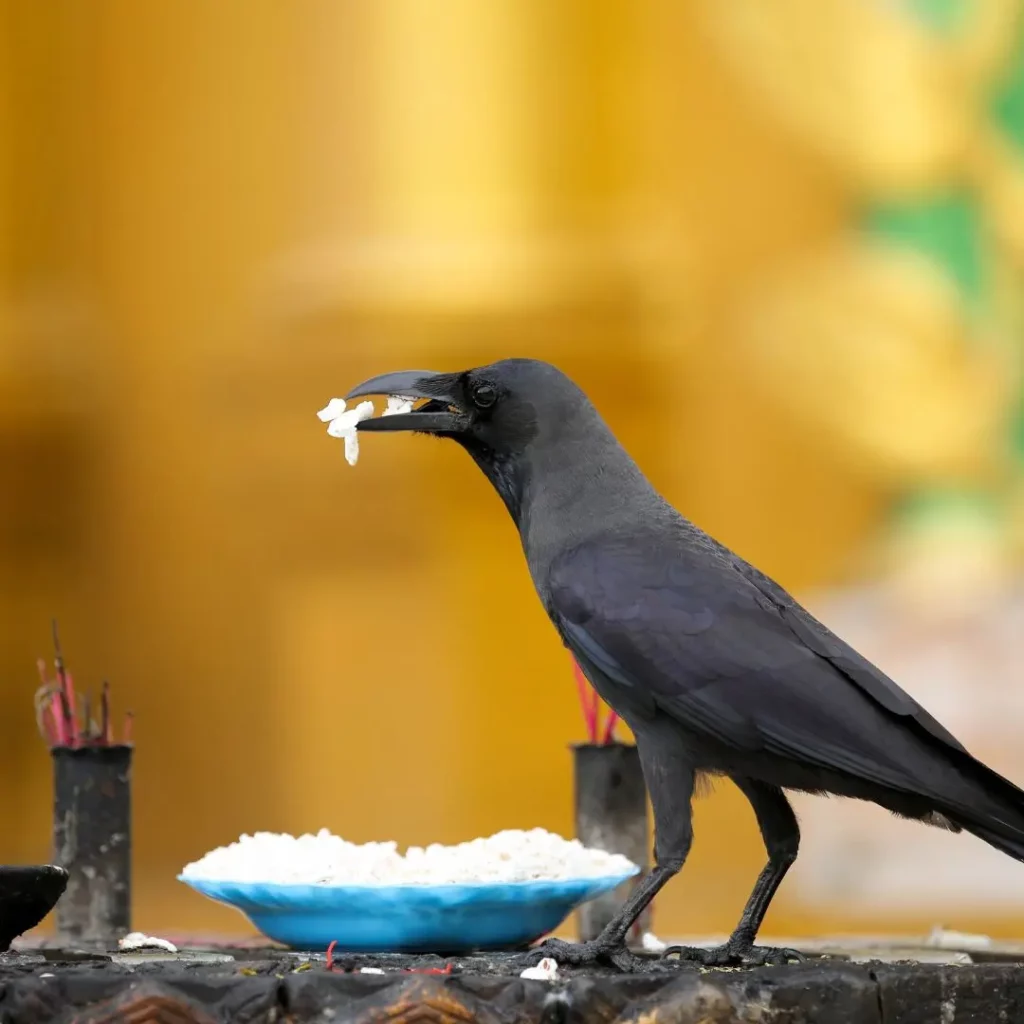
Even though they’re not common pets and are wild, crows are among the most intelligent birds in the world. Crows exhibit remarkable cognitive abilities, problem-solving skills, and tool use. They’re such brilliant birds that their intellect is comparable to some primates.
Not only can they mimic the sounds of their environment and other birds and animals, but their mimics are so impressive that they can learn to say and understand the meaning of words.
Myna Birds

Myna birds are exceptional mimics, capable of replicating a wide range of sounds, including human speech. Their vocal repertoire can include individual words, phrases, and even entire sentences. They are particularly adept at imitating sounds they hear frequently in their surroundings.
Magpie Bird

Magpies are less adept at speech mimicry than parrots or other common pet birds. But they possess an impressive ability to imitate sounds, including human speech. Their vocalizations range from chattering and warbling to mimicking alarm sounds and even human words or phrases.
Compared to the majority of other birds that talk, Magpies can be significantly more vocal and louder.
Lyrebird

Lyrebirds are large, ground-dwelling birds native to the rainforests and woodlands of southeastern Australia. They’re renowned for their extraordinary ability to mimic a wide range of sounds, from the calls of other birds to human-made noises like the sound of tools and camera shutters (for example).
Their vocalizations are not mere imitations; they capture the nuances, inflections, and even the rhythm of the original sounds, making them truly indistinguishable from the source – similar to crows.
What Is the Most Talkative Bird?
The fastest answer would be the African Grey parrot since they’re incredibly intelligent species and their syrinx is well-developed.
But keep in mind that determining the “most talkative bird” is a subjective matter, as different bird species possess varying levels of vocal prowess and mimicry abilities.
Are Male Birds More Talkative?
In general, male birds tend to be more talkative than females. This is because males use their vocalizations to attract mates, defend their territories, and communicate with other birds.
Females, on the other hand, tend to be more selective in their vocalizations, often using them for specific purposes such as calling to their chicks or warning of danger.
Why Do Birds Mimic Human Speech?
Here are some of the most common reasons why birds mimic human speech, especially parrots:
- Birds are quite intelligent, and mimicking helps them learn and communicate. By mimicking the sounds they hear, birds can learn about their environment and how to interact with humans.
- Most of the birds can be quite affectionate and friendly. Mimicking human speech can be a way for birds to bond with their human companions.
- Birds are social animals, and they often learn from each other. Hearing another bird mimicking human speech may make it more likely to try it out.
However, parrots are the most capable of talking or mimicking our language. If you want to learn more about how and why birds like parrots talk, check out this quick YouTube guide: Why parrots can talk like humans
How to Teach Your Bird to Talk?
Teaching your bird to talk requires patience, consistency, and positive reinforcement. Here are some tips for getting started:
- Start simple: Don’t overwhelm your bird with too much information at a time. Start with simple words like “hello” and “goodbye,” and gradually increase the complexity of the phrases as your bird becomes more proficient.
- Treat your birdie: Reward your bird with treats or praise when it attempts to mimic your speech. This will help your bird to associate talking with positive experiences and make it more likely to continue trying.
- Be patient: Your bird may take some time to learn to talk. Keep going even if your bird starts talking right away. Just keep practicing with your bird; eventually, it will get the hang of it.
Remember, every bird is different; some birds may be more inclined to talk than others.
My Senior Paws is a participant in the Amazon Services LLC Associates Program, an affiliate advertising program designed to provide a means for sites to earn advertising fees by advertising and linking to Amazon.com. We also participate in other affiliate programs which compensate us for referring traffic.

